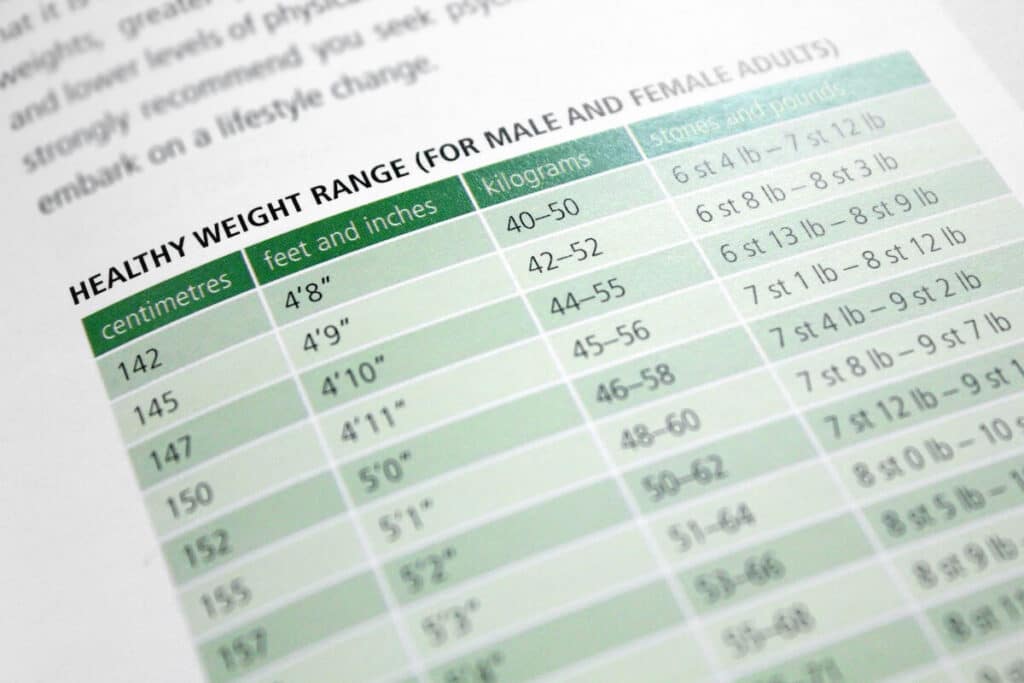I’ll never forget a story a client shared with me. At just 10 years old, she stepped onto her Wii Fit, excited for the usual playful encouragement. But instead of the usual friendly sound effects, the screen flashed the word “Obese” in bold, glaring letters. The familiar “ooh” sound, once lighthearted, now felt heavy, almost judgmental, amplifying a fear she hadn’t even known how to name.
In that moment, something inside her shifted. What should have been a carefree childhood experience became a defining moment, shaping how she saw her body for years to come. It wasn’t just the word on the screen; it was the feeling of being judged by a number—a weight that lingered long after the game was turned off.
As a dietitian, I’ve heard countless stories like this—stories of people who’ve internalized early messages about their worth based on numbers and labels. BMI (Body Mass Index), a simple tool that measures the relationship between weight and height, plays a significant role in how we view ourselves and our health. But does it truly reflect the complete picture of wellness?
What Is BMI?
Body Mass Index (BMI) is a formula used to assess whether your weight is appropriate for your height1. Here’s how to calculate it2:
BMI = weight (kg) / height² (m²)
Based on the result, BMI categorizes individuals into four ranges1:
- Underweight: BMI less than 18.5
- Normal weight: BMI between 18.5 and 24.9
- Overweight: BMI between 25 and 29.9
- Obese: BMI 30 or higher
The Limitations of BMI
BMI can serve as a broad health screening tool, particularly at its extremes—very high or very low levels may indicate health concerns1; however, in most cases, BMI oversimplifies health by failing to account for key factors3:
- Muscle Mass vs. Fat
BMI doesn’t differentiate between muscle and fat4. For instance, an athlete with high muscle mass might fall into the “overweight” or even “obese” category despite having a low body fat percentage4. Muscle is denser than fat, and it is more metabolically active, supporting better overall health. - Body Composition & Fat Distribution
BMI overlooks body fat percentage and its distribution. Two people with the same BMI can have vastly different health outcomes based on where their fat is stored. Abdominal fat, especially around the organs, is a significant risk factor for conditions like heart disease and diabetes3. BMI also ignores factors like bone structure or frame size, which can influence body weight and health outcomes. - Age, Gender, and Ethnic Differences
BMI doesn’t account for the changes in body composition that occur with age. As people get older, they often lose muscle mass and gain fat, which can result in a higher body fat percentage, even if BMI remains the same. Additionally, women tend to have a higher body fat percentage than men4 due to hormonal differences, and BMI thresholds aren’t universally applicable to all ethnic groups. For example, South Asians may face higher health risks at lower BMI levels5, while African Americans may have higher lean mass, making BMI less reliable for them6. - Lifestyle Factors and Risk
BMI also overlooks important lifestyle factors like physical activity, sleep quality, and stress levels2. Someone with a “normal” BMI but poor nutrition or high stress may still be at risk for chronic diseases.
Context Matters
While BMI remains a common screening tool, it’s crucial to recognize that health is not determined by a single number or size. The Health at Every Size (HAES) movement underscores that people of all body sizes can be healthy by focusing on positive lifestyle behaviors, not just weight7. HAES promotes health through balanced nutrition, regular physical activity, and emotional well-being—regardless of one’s weight or BMI category7.
In fact, the reliance on BMI labels like ‘overweight’ or ‘obese’ can reinforce harmful stereotypes, contribute to body image issues, and lead to anxiety or disordered eating8. The pressure to conform to a ‘healthy’ BMI range distorts how individuals perceive themselves and highlights the limitations of BMI as the sole measure of health.
To gain a more accurate understanding of health, it’s important to use a range of tools that look beyond BMI. DEXA scans or bioelectrical impedance analysis (BIA) offer clearer insights into body composition by distinguishing between fat and muscle mass. Other metrics, such as Waist-to-Hip Ratio, Waist-to-Height Ratio, and Body Roundness Index (BRI), provide insights into fat distribution, particularly around the abdomen—a known risk factor for heart disease and diabetes9. Blood markers like cholesterol, glucose, and inflammation levels give vital information about internal health that BMI does not2.
Furthermore, physical fitness—strength, endurance, and flexibility—is a critical aspect of well-being. An active individual with a higher BMI may be healthier than someone with a lower BMI who is sedentary. Lastly, mental health is essential to physical health, emphasizing the need to manage stress, anxiety, and depression.
Moving Beyond BMI
True wellness is multifaceted; it encompasses not only body composition and physical fitness, but also mental health and lifestyle elements such as sleep, hydration, and stress management. By moving beyond BMI, we can focus on the behaviors that truly nourish and support our overall well-being.
At Laura Cipullo Whole Nutrition, we take a holistic approach to health, emphasizing the development of mindful habits and a positive relationship with food, movement, and self-care. Our dietitians work closely with clients to create personalized, sustainable plans that enhance both physical vitality and emotional resilience.
References
- Bothwell S. About BMI and Eating Disorders. Eating Disorder Hope. Published September 17, 2021. Accessed January 16, 2025. https://www.eatingdisorderhope.com/information/eating-disorder/bmi
- CDC. About Body Mass Index (BMI). BMI. Published July 17, 2024. Accessed January 16, 2025. https://www.cdc.gov/bmi/about/
- Roni Caryn Rabin. Time to Say Goodbye to the B.M.I.? Nytimes.com. Published September 6, 2024. Accessed January 16, 2025. https://www.nytimes.com/2024/09/06/health/body-roundness-index-bmi.html
- Brazier Y. BMI Limitations: Age and Sex, Body Composition, and Health. www.medicalnewstoday.com. Published November 2, 2018. Accessed January 16, 2025. https://www.medicalnewstoday.com/articles/323543#age-and-sex
- Davis J, Juarez D, Hodges K. Relationship of Ethnicity and Body Mass Index with the Development of Hypertension and Hyperlipidemia. Ethnicity & disease. 2024;23(1):65. Accessed January 16, 2025. https://pmc.ncbi.nlm.nih.gov/articles/PMC3726536/
- Where Do We Go from Here: Impact of Racism & Racial Disparities on Obesity Rates in African Americans & Clinical Implications. Obesity Medicine Association. Published January 20, 2022. Accessed January 16, 2025. https://obesitymedicine.org/blog/where-do-we-go-from-here-impact-of-racism-racial-disparities-on-obesity-rates-in-african-americans-clinical-implications/
- The Association for Size Diversity and Health (ASDAH). The Health at Every Size® (HAES®) Principles. ASDAH. Published 2024. Accessed January 16, 2025. https://asdah.org/haes/
- Graves L. Size Diversity and Eating Disorders. National Eating Disorders Association. Published May 24, 2024. Accessed January 16, 2025. https://www.nationaleatingdisorders.org/size-diversity-and-eating-disorders/
- Pugle M. Forget BMI—This Measurement Might Be a Better Indicator of Health. Health. Published October 6, 2023. Accessed January 16, 2025. https://www.health.com/waist-to-hip-ratio-health-indicator-8285898








